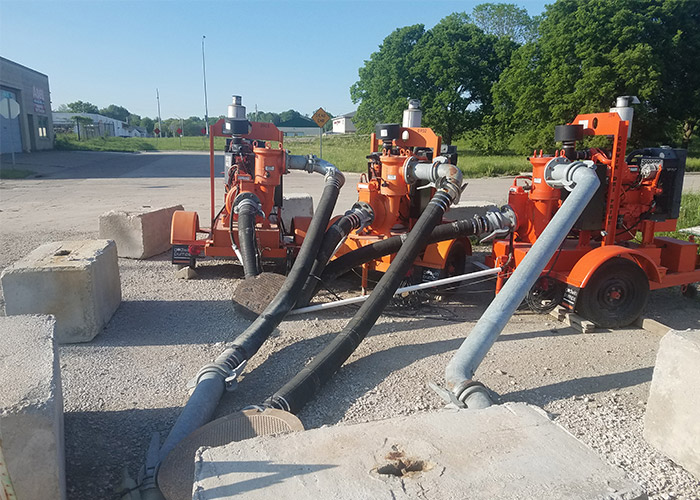Don’t Let Rain Enter the Wrong Drain
If wet weather is overloading your municipal treatment plant, flow meters can spot source of problem.
If wet weather is overloading your municipal treatment plant, flow meters can spot source of problem.

When the snow starts melting and spring rain begins to fall, it’s a refreshing sign that winter is coming to an end. However, this can be a difficult season for homeowners, wastewater departments, and elected officials.
Rainfall or “wet weather flows” add excess water into the sanitary sewer systems. This type of water belongs in storm water sewers, drainage ditches, or on the surface of the ground, not in sanitary sewers. Once in the sanitary sewer, this water causes a variety of problems including:
Flow Meters Find Where Rainfall is Getting into Sanitary Sewers
If wet weather flows are causing problems in your city, flow meters can be used to locate key sources of “inflow and infiltration” (I&I) of clear water (e.g. rain water) into sanitary sewers. Inflow happens when water goes directly into the sewers without touching soil, such as from house downspouts or parking lot storm drains. Infiltration is where rain water percolates through the soil, and then finds its way into sanitary sewers through cracks or holes in the pipes.
How Flow Meters Work
The use of sanitary sewer flow meters allows us to identify areas of inflow and infiltration and apply cost-effective solutions in time to avoid more extensive damage and expensive repairs. For example, if pipes are found to have storm sewer cross connects, area drains, or other inflow sources, the repairs are very low cost and significantly reduce I&I. In addition, if pipes are found to have cracks, holes, or other defects, a cured-in-place pipe (CIPP) liner can often times be applied inside the pipe, with holes cut in for service to houses and businesses. These cost-effective solutions can very often reduce the I&I problem before it grows, and pipes need to be completely replaced.
Case Study: Forgotten Field Tile Source of Community’s Basement Backups
For several years, the Homestead Sanitary District (HSD) experienced basement backups during rain events. Prior to flow metering, the community hauled a mobile diesel pump to manholes to pump the water into drainage ditches each time it rained. Flow meters located areas where the flow readings spiked during rain events. Cameras were then placed in the pipes to pinpoint the exact location of the I&I. It was discovered that field tiles were tied into the sanitary sewer system. The tiles were disconnected and other repairs made. Since then, the HSD no longer needs to pump water from the manholes.
Flow Meters: To Own or Not to Own
Cities can purchase their own flow meters, but the capital expense may not be worth the investment due to the short timeframes the meters are needed and used. Hiring a consultant such as Shive-Hattery can be very beneficial because:
If your community, city, and/or sanitary district deals with the inconvenience of pumping out manholes or cleaning up overflows at your wastewater treatment plant every spring, it’s time for a solution. Finding the source of the problem is the first step to fixing it, especially when it’s related to inflow and infiltration. Flow metering is a quick and cost-effective way to locate and determine the problems, ultimately identifying the best long-term solutions for you.